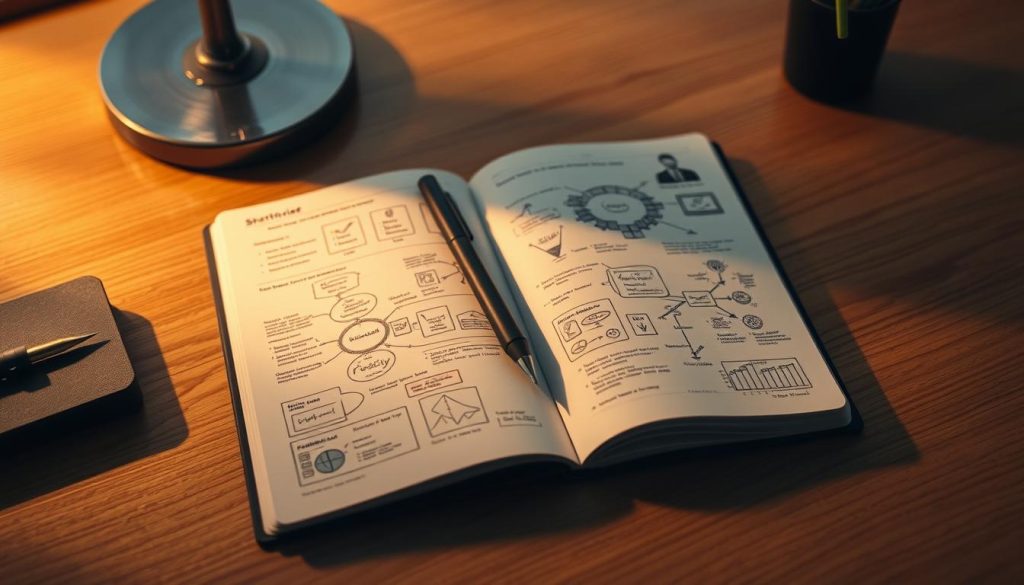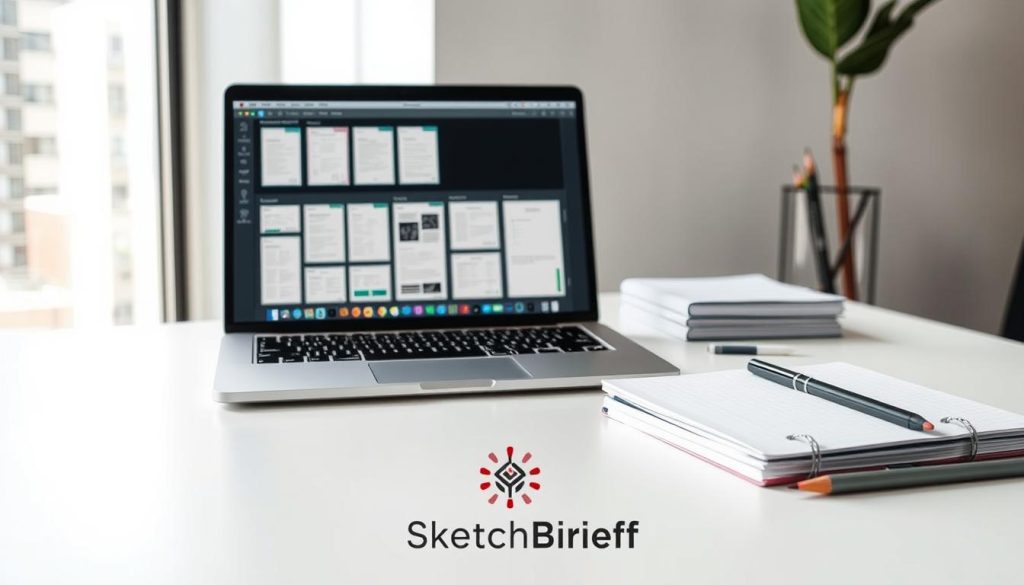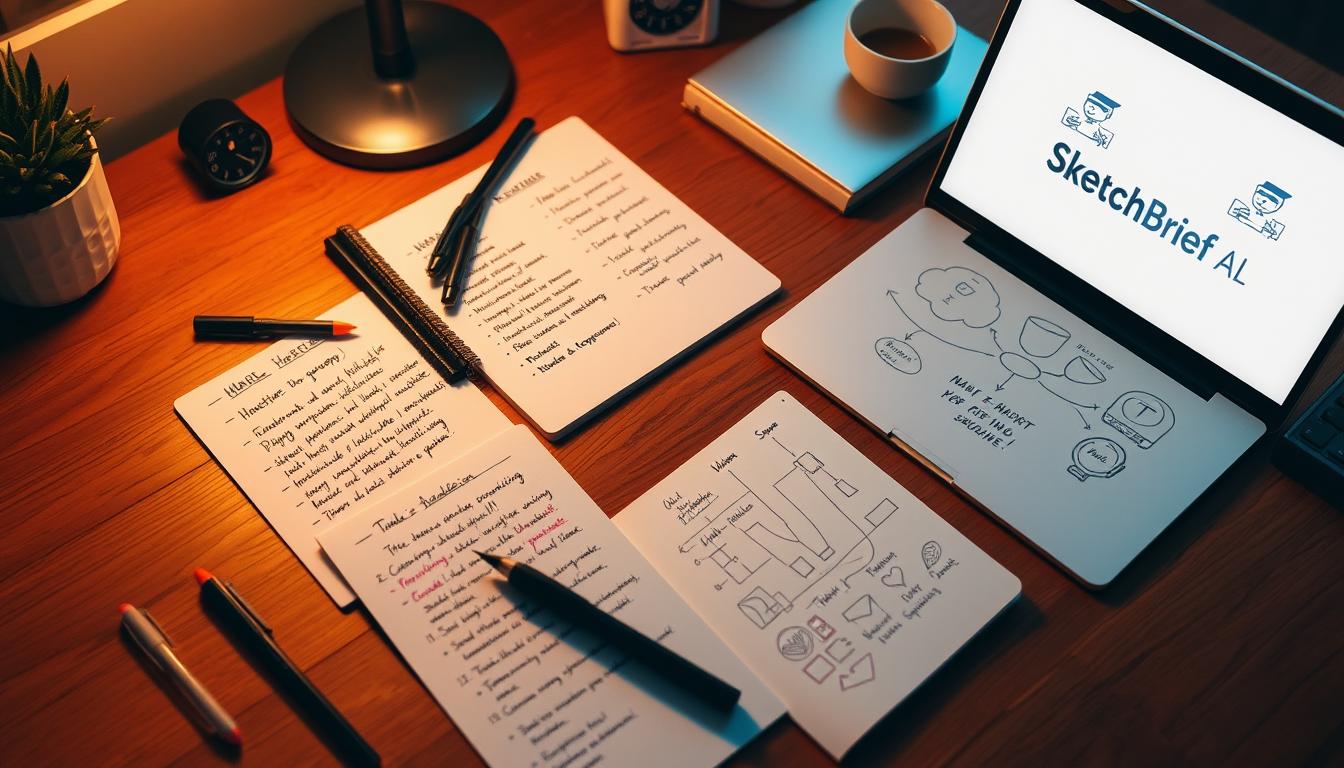How much better could your work be if each note turned into clear action in half the time? We ask this to shift focus from copying information to capturing context that speeds decision making.
We define notes as concise records that capture who, what, and why. Proven systems — the Cornell Method from Walter Pauk and modern mind maps popularized by Tony Buzan — give structure so your ideas stay useful.
Today, AI-first tools like Mem add Smart Search, Related Notes, voice transcription, templates, tags, and an AI chat that surfaces connections for you. These features turn scattered entries into searchable, sharable assets.
In this article we show the practical way to combine systems and tools into repeatable processes. You will get clear tips for capturing ideas fast, tagging with intent, and using AI to reveal related information without extra manual work.
Key Takeaways
- Structure matters: Use Cornell, outlines, or mind maps to make notes actionable.
- Write for your future self: Short context beats verbatim transcription.
- Leverage AI features: Transcription and semantic search save time and surface links.
- Tag and add metadata: Consistent tags make retrieval reliable across devices.
- Measure outcomes: Faster meeting prep, clearer decisions, and fewer lost ideas.
Start with purpose: set your note-taking goals for today’s work
Begin with a clear goal so your notes capture decisions, not just facts. Write a one-line objective and 3–5 checkpoints to validate progress. This keeps your pages focused and easy to revisit.
Before a class or meeting, skim the agenda and list the top questions you want answered. Note key terms and concepts. A short pre-read saves time during capture.
Adapt objectives by context: in a client session, aim to “identify three risks and owners.” In class, target two definitions to clarify. Set one-screen or one-page limits to force concision.
Inline, mark unknown terms and open questions. Reserve a brief block after the session to resolve them. End the day with a quick pass: confirm the initial idea matches your outcome and list follow-ups.
- Rhythm: objective → key information → blockers → next steps.
- Checkpoints: short, measurable points to track during the day.
| Objective | Checkpoints | Outcome |
|---|---|---|
| Clarify two concepts | List terms, ask 3 questions, verify definitions | Clear summary and follow-ups |
| Identify risks | Name 3 risks, assign owners, note mitigation points | Actionable next steps |
| Prepare summary | One-line objective, 3 checkpoints, end-of-day pass | Ready deliverable |
Choose a method that fits your topic: proven structures that save time
Pick a structure that matches your topic so each page becomes a reusable resource.
The Cornell method works best for class sessions and interviews. Use a main notes column for facts and actions. Add a cue column for questions or keywords. Finish with a one-line summary to lock understanding.
Mind mapping helps when you want to explore ideas and concepts. Start from a central topic and branch to subtopics. Visual links make relationships obvious at a glance and spark divergent thinking.
Outlining is ideal for hierarchical topics and clean handoffs. Indent main sections, add subpoints, and keep supporting information minimal. This style makes scanning and packaging content simple.

Quick comparison
| Method | Best for | Why it works |
|---|---|---|
| Cornell | Class, interviews | Separates capture from reflection; reduces cognitive load |
| Mind map | Brainstorming, system design | Shows relationships; encourages new ideas |
| Outline | Reports, project briefs | Clear hierarchy; easy to scan and share |
Use a few anchor words—definitions, metrics, owners—to keep pages compact but rich. If information shifts, switch methods midstream. A quick test: map for relationships, Cornell for learning and quizzing, outline for delivery.
Capture fast, anywhere: voice, photos, and quick text with AI help
When speed wins, capture first and refine later. Use your phone to lock in an idea, a price tag, or a page reference. AI can turn that raw capture into searchable information so you save time and avoid lost things.
Voice notes to text: record ideas on the go and auto-transcribe
We recommend recording voice notes when speed matters, then letting AI transcribe to text so your thoughts become searchable. A short clip keeps context and preserves tone.
- Mobile flow: long-press to record → auto-transcribe with punctuation → add one-line context linking the clip to a project or class.
- Why it works: it converts spoken ideas into searchable information without slowing your day.
Photo notes for details like pages, tags, or store hours you’ll need later
Photo notes capture things you can’t type quickly—store hours, a recycling list, wine labels, or a bike price tag. Use OCR and automatic date/location extraction to find the right page later.
- Tag or title captures with a consistent prefix and topic so images don’t disappear into your camera roll.
- Add a calendar event from a note in one tap for follow-ups on the right day.
- Batch a short review block each day to link new captures to projects and trim noise.
Accessibility and privacy matter: voice capture helps when typing isn’t practical, and workspace rules keep sensitive captures visible only to the right people. Keep the workflow light—capture first, label minimally, refine later—so you use it every way you move.
Add context, not clutter: the metadata that makes notes findable
A small set of fields makes each entry fast to write and easy to find.
We recommend these essential fields for every note: date, class or project, topic, source, and page when applicable. Keep titles consistent—use the pattern [Date] — [Class/Project] — [Topic]—and add a one-line objective at the top.
Include source and page anchors to tie your notes to original material. This saves time when you verify facts or cite information. Digital notes gain most from brief tags and structured fields that let you jump back to sources quickly.
- Limit tags to two or three per note and align them with topics and teams.
- Mark decisions, owners, and due dates inline so action items are visible at a glance.
- Use templates that auto-insert date and class fields to cut friction and keep consistency.
Before you close a note, scan for missing metadata and fill gaps while the context is fresh. Cross-link related notes to build a lightweight graph that helps find related information without heavy upkeep.
| Field | Why it helps | Best practice |
|---|---|---|
| Date | Chronology and versioning | ISO format (YYYY-MM-DD) in title |
| Class / Project | Context and ownership | Consistent project name in header |
| Topic | Quick scan and filtering | One-line topic, avoid long summaries |
| Source & Page | Verification and citation | Include book title and page number when relevant |
| Tags | Cross-referencing | 2–3 tags aligned to teams or topics |
note-taking productivity hacks with smart organization
When we organize with intent, AI features can link concepts automatically. A lean structure helps you find information fast and cuts duplicate work.
Tags and keywords form a lightweight taxonomy. Keep tags consistent and limit them to two or three so the AI feature can cluster related topics and surface the right notes.
Color-coding to separate projects, clients, and subjects
Use color at a high level—projects, clients, subjects—so sections scan quickly. Color is a visual shortcut that saves time under deadline pressure.
AI-powered search and related notes to surface what matters
Smart Search retrieves the note you meant, not just exact words. Related Notes reveals adjacent content you didn’t know to ask for, reducing context switching.
- Add a topic field and link each note to a canonical hub page.
- Run a weekly cleanup: merge duplicates, archive stale items, standardize labels.
- Choose tools with core features first—fast capture, robust search, reliable sync—before adding advanced options.
| Goal | Process | Metric |
|---|---|---|
| Faster retrieval | Tags + color + Smart Search | Search-to-find time |
| Reduce duplicates | Weekly cleanup and merge | Duplicate notes avoided |
| Team clarity | Shared conventions and link-backs | Fewer naming conflicts |
Templates, collaboration, and shared processes that scale
Templates and shared workflows turn one-off notes into repeatable team assets.
We provide ready templates for meetings, research, and project briefs so notes stay consistent and quick to complete under pressure.

Reusable templates for meetings, research, and project briefs
Each template includes objectives, agenda, decisions, owners, due dates, and open questions. This ensures the essential points are never missed.
Tailor templates by function—sales discovery, engineering design, and research protocols—so each captures the right ideas and evidence.
Real-time collaboration: comments, tasks, and version clarity
Real-time editing, comments, and task assignment turn a note into a living workspace that aligns work across teams.
We keep version clarity with change logs and owner governance. That method reduces follow-up churn and keeps text exportable as project artifacts.
- Capture questions inline during sessions to improve accuracy.
- Convert a final note to a task, export text, or share a link in one click.
- Use role-based access and private sections for sensitive details.
| Need | Solution | Benefit |
|---|---|---|
| Consistency | Shared templates | Faster onboarding |
| Collaboration | Comments & tasks | Clear ownership |
| Security | Role access | Protected sensitive work |
Refine for retention: review, summarize, and engage with your notes
Set aside a small weekly slot to turn fragments into clear, actionable summaries. A short routine compresses dispersed captures into one durable summary for your projects, class work, or research.
Weekly review cycles
We recommend a weekly review rhythm that distills key points, open questions, and next actions. Rewriting a page in your own words exposes gaps and strengthens recall.
Active engagement
Ask questions of your notes and connect ideas across topics and classes. Use AI features to surface related entries and hidden patterns so you link concepts faster.
- Confirm decisions, extract tasks, resolve questions, add a closing summary.
- Use short, spaced passes to reinforce memory without taking much time.
- Mark recurring concepts with a visual cue so high-impact items jump out on review.
| Action | Why | When |
|---|---|---|
| Weekly recap note | Durable index of best ideas | Weekly |
| Compare class notes | Fill blind spots | Monthly |
| AI related search | Find linked information | As needed |
When you interact with notes deliberately, you retain more and act faster. Small habits at review time yield big gains in learning and execution.
Conclusion
Make your notes work for you: select the method that works best for each topic, capture context quickly, and close with a short summary and next steps.
We stress clear words that speak to your future self. Use Cornell, mind maps, or outlines depending on the information and the outcome you need.
Use AI features—transcription, smart search, related notes, and templates—to reduce friction and surface the right ideas at the right moment. Add simple tags, consistent titles, and a weekly review to keep the library coherent.
Practical things matter: photo captures and calendar anchors make everyday details retrievable. Start with one small change today—add metadata or a short review block—and build from there.
Goal: turn scattered information into decisions and learning with less time and more clarity.

Leave a Reply